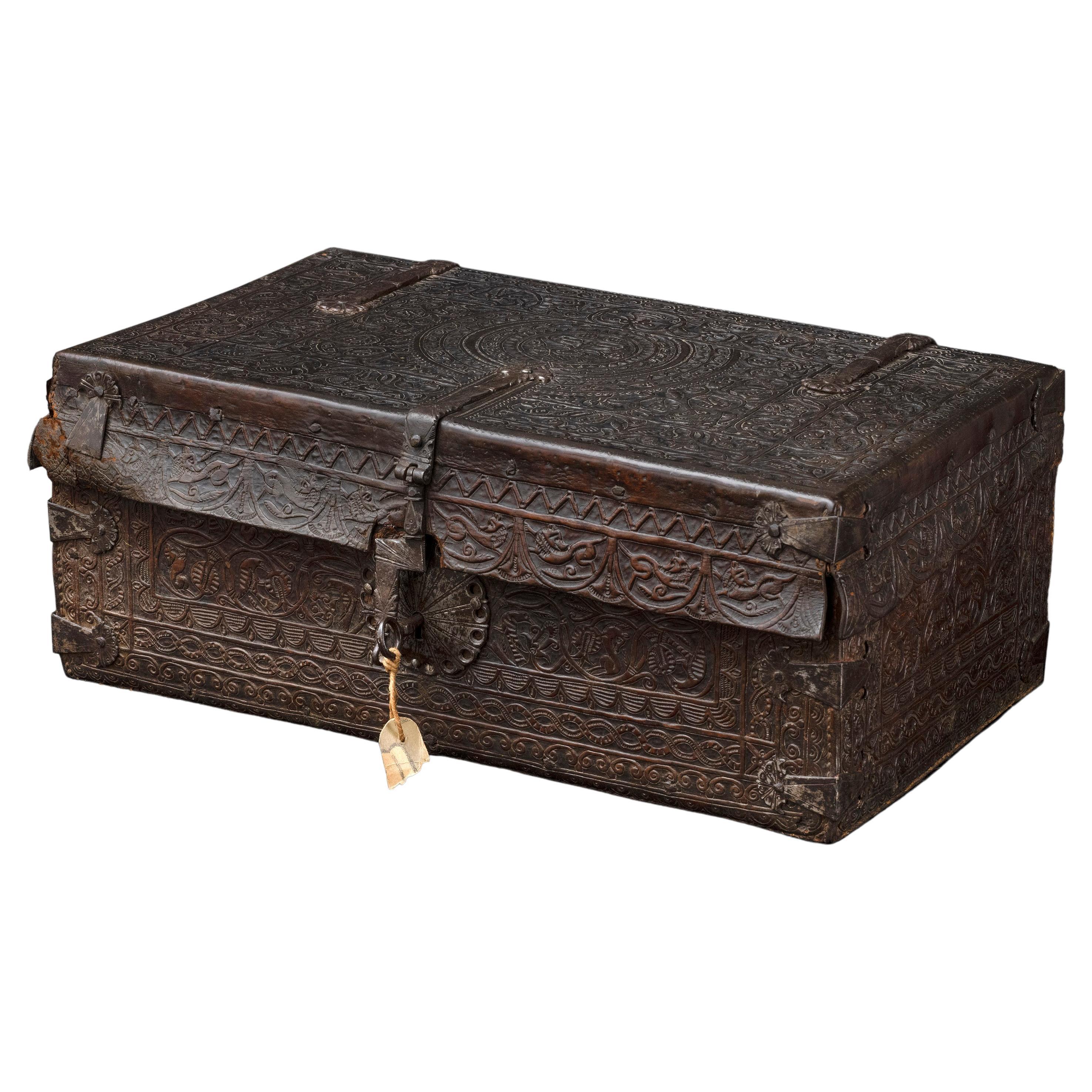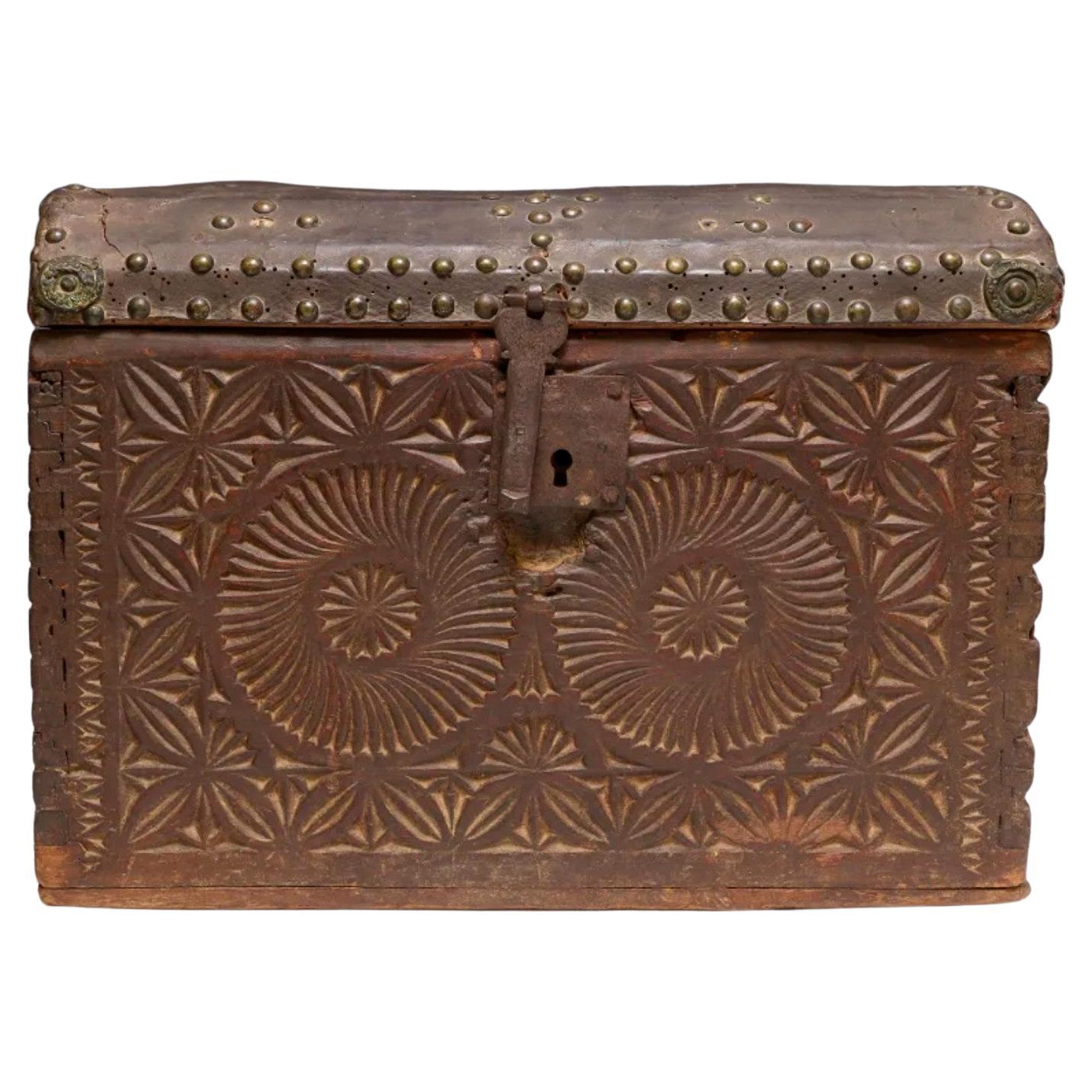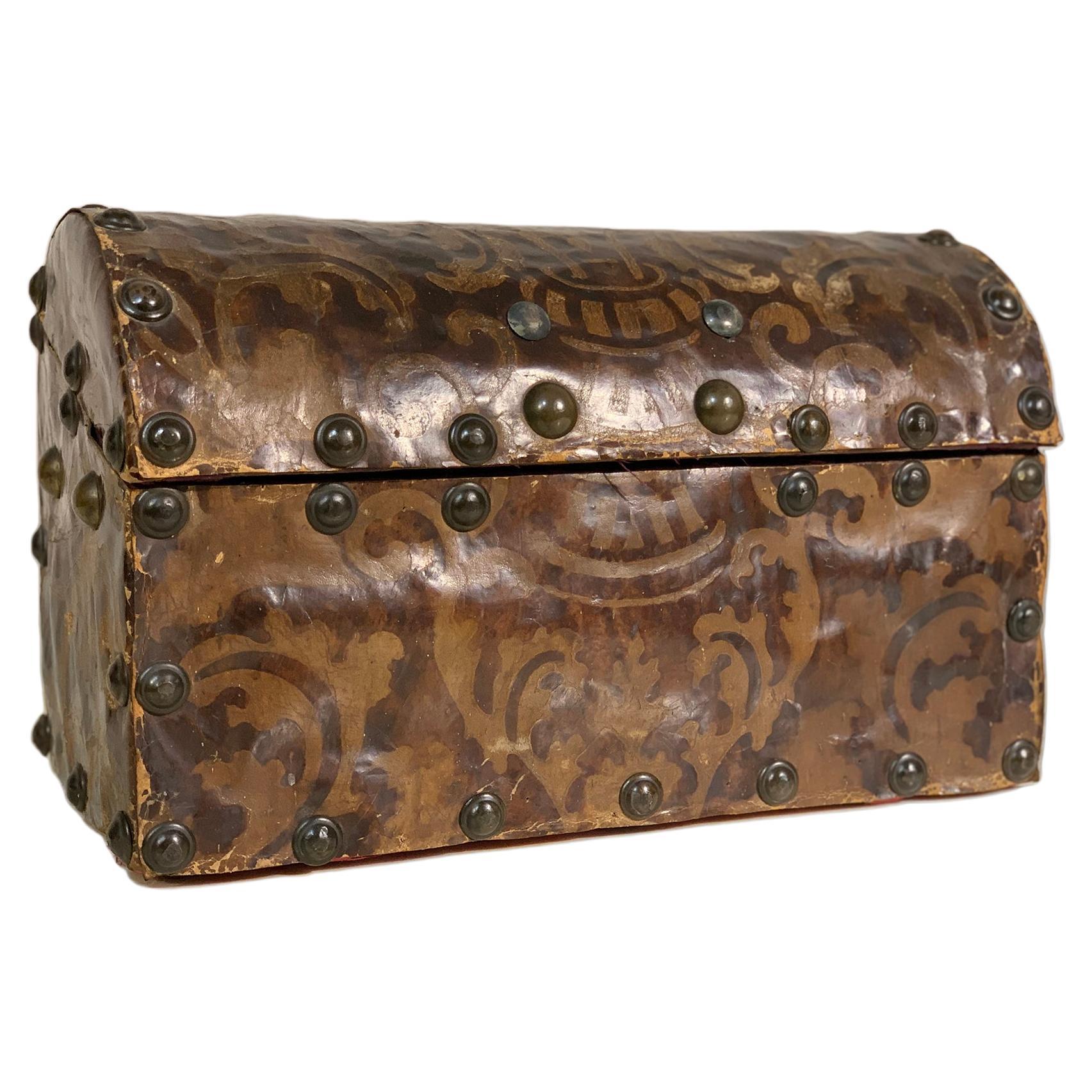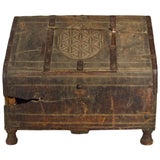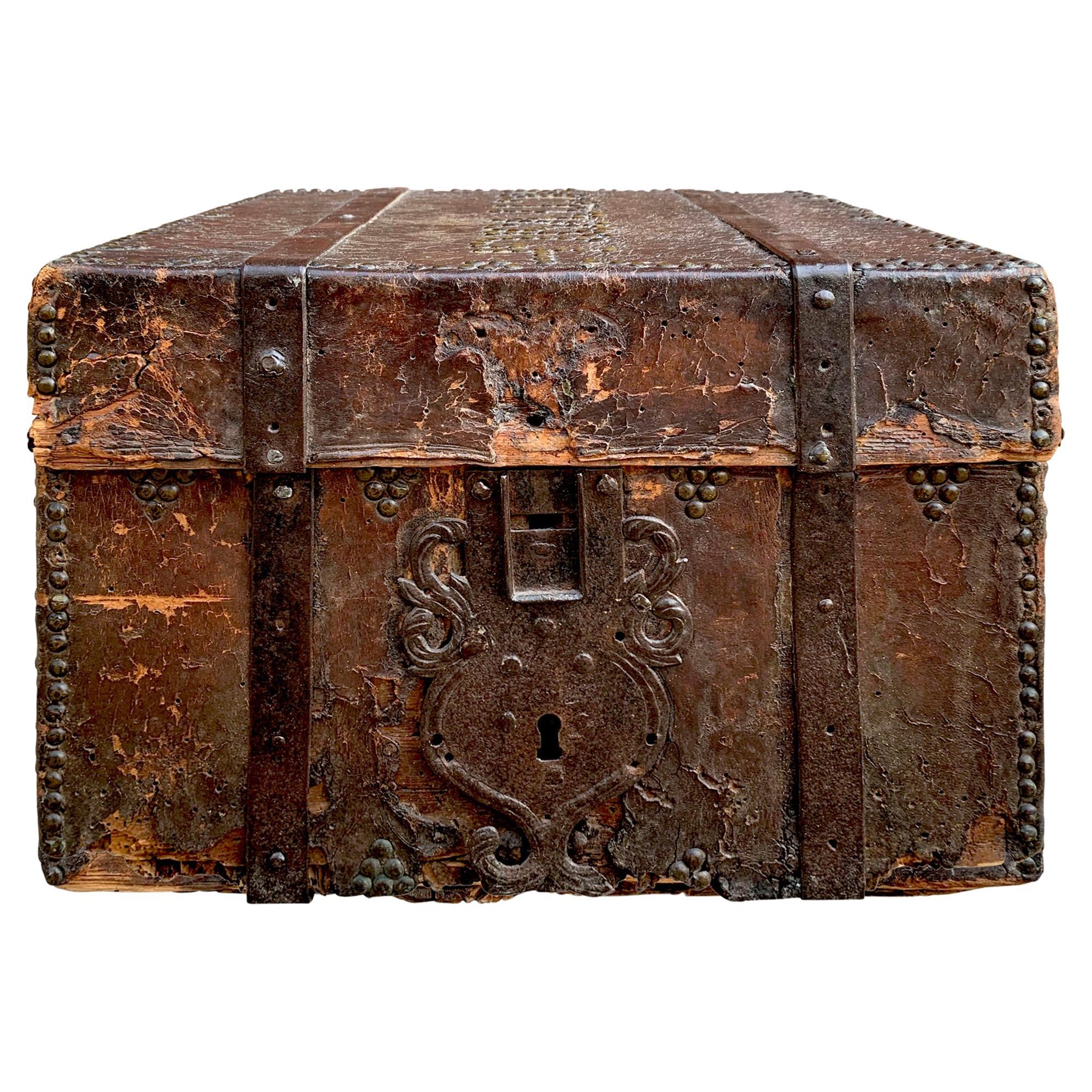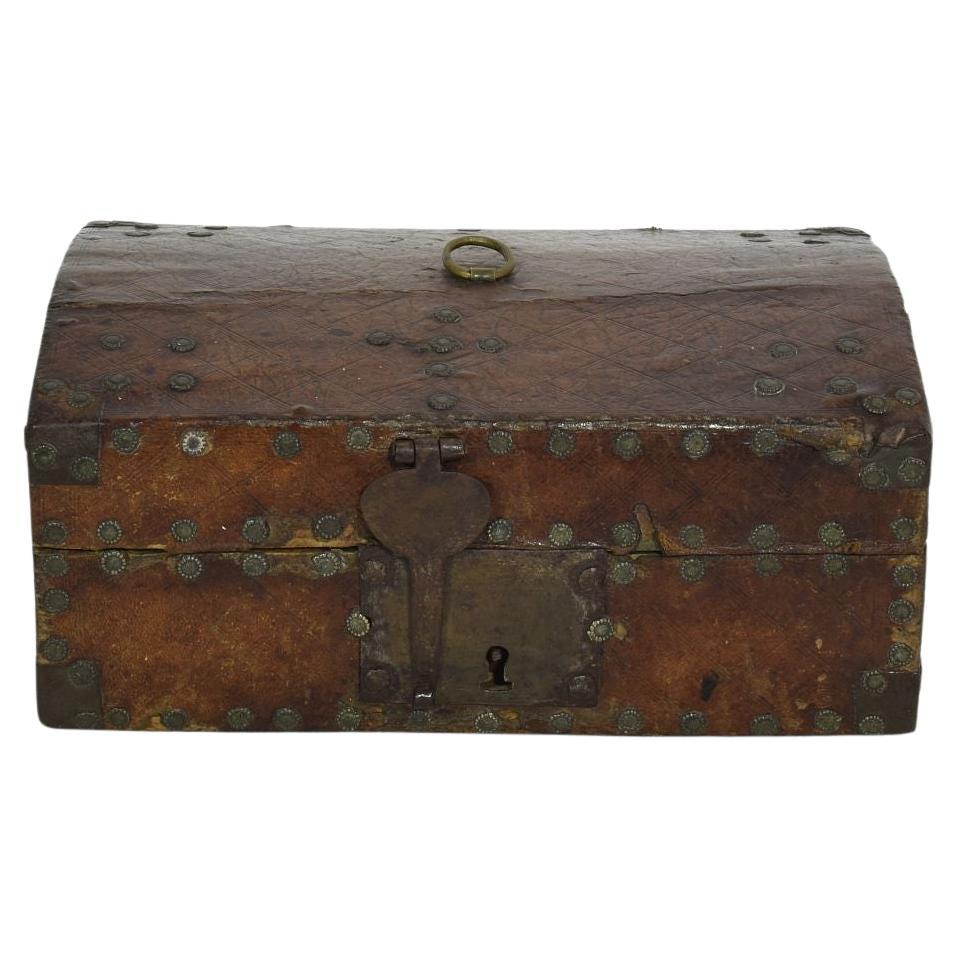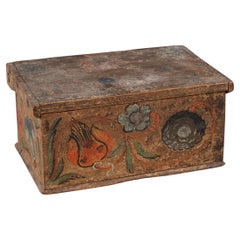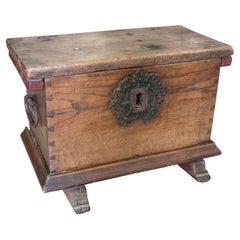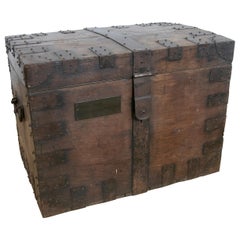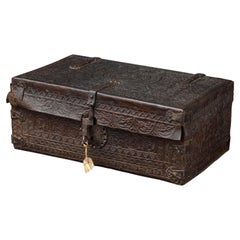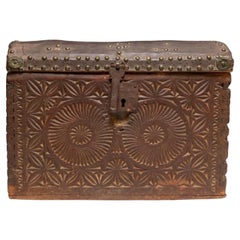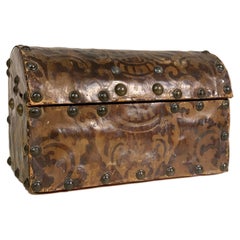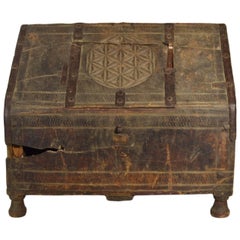Items Similar to Spanish Mudejar-Style Wooden and Leather-Covered Chest, circa 1500
Want more images or videos?
Request additional images or videos from the seller
1 of 6
Spanish Mudejar-Style Wooden and Leather-Covered Chest, circa 1500
$2,985.62
£2,207.77
€2,500
CA$4,101.04
A$4,560.12
CHF 2,387.30
MX$55,702.71
NOK 29,998.84
SEK 28,219.92
DKK 19,035.57
About the Item
Mudejar-style chest. Spain, circa 1500.
Wood and leather.
A chest with a wooden core and leather lining. The leather has been embossed with stylised vegetal motifs on both sides, in a style representative of Mudéjar decoration.
- Dimensions:Height: 3.55 in (9 cm)Width: 4.93 in (12.5 cm)Depth: 2.37 in (6 cm)
- Materials and Techniques:
- Place of Origin:
- Period:
- Date of Manufacture:1500
- Condition:Wear consistent with age and use. Minor losses.
- Seller Location:Marbella, ES
- Reference Number:1stDibs: LU3044332540822
About the Seller
5.0
Platinum Seller
Premium sellers with a 4.7+ rating and 24-hour response times
Established in 1996
1stDibs seller since 2017
702 sales on 1stDibs
Typical response time: <1 hour
- ShippingRetrieving quote...Shipping from: Marbella, Spain
- Return Policy
Authenticity Guarantee
In the unlikely event there’s an issue with an item’s authenticity, contact us within 1 year for a full refund. DetailsMoney-Back Guarantee
If your item is not as described, is damaged in transit, or does not arrive, contact us within 7 days for a full refund. Details24-Hour Cancellation
You have a 24-hour grace period in which to reconsider your purchase, with no questions asked.Vetted Professional Sellers
Our world-class sellers must adhere to strict standards for service and quality, maintaining the integrity of our listings.Price-Match Guarantee
If you find that a seller listed the same item for a lower price elsewhere, we’ll match it.Trusted Global Delivery
Our best-in-class carrier network provides specialized shipping options worldwide, including custom delivery.More From This Seller
View All18th Century Mexican Chest from New Spain
Located in Marbella, ES
Mexican chest. New Spain, 18th century.
In polychrome wood.
Slight paint losses on the lid.
Measurements: 7 x 16 x 6.5 cm.
Wooden chest from the vicerega...
Category
Antique Mid-18th Century Mexican Decorative Boxes
Materials
Wood
Spanish Wooden Chest with Original Iron Fittings
Located in Marbella, ES
Spanish wooden chest with original iron fittings.
Category
Antique 19th Century Spanish Credenzas
Materials
Iron
18th Century Spanish Wooden Trunk with Iron Hardware
Located in Marbella, ES
Antique 18th century Spanish wooden trunk with iron hardware.
Category
Antique 18th Century Spanish Trunks and Luggage
Materials
Wood
English Wooden Travelling Case Which Belonged to the Honourable Marquess of Lans
Located in Marbella, ES
English wooden travelling case which belonged to the honourable marquess of lansdowne.
Category
Mid-20th Century English Trunks and Luggage
Materials
Bronze, Iron
Spanish Wooden Chest with Original Iron Fittings
Located in Marbella, ES
Spanish wooden chest with original iron fittings.
Category
Antique 19th Century Spanish Credenzas
Materials
Iron
18th Century Colonial Wooden Chest with Relief Carvings and Iron Fittings
Located in Marbella, ES
18th century colonial wooden trunk with hand carved ornamental, flower and bust reliefs on top and sides. Wrought iron fittings, decorations and side h...
Category
Antique Mid-18th Century South American Trunks and Luggage
Materials
Iron
You May Also Like
Boiled Leather Trunk, Spanish, 17th Century
Located in Bruxelles, BE
Leather trunk
Spanish, 17th century
Boiled Leather, wood and iron
Measures: 22 x 53 x 32 cm.
Provenance :
- collection Metz-Noblat, Château de Clevant, France
Rectangular trunk of the form and size of a small suitcase with wrought iron hinges and lock-plate.
Wood, covered with leather, cut and embossed with every surface of the thick cow hide covered in interlace, zoomorphic features.
The construction method is boiled leather, often referred to by its French translation cuir-bouilli: a process used to change flexible, vegetable-tanned leather into rigid, moulded objects. For shaping of the vegetable-tanned leather, heat and moisture were used, as indicated by the term boiled leather. No written medieval sources describing the production of decorated cuir bouilli objects survive, so knowledge of the process relies on the important studies of the Scottish leather historian John William Waterer. A large range of methods, materials and techniques could be used in various combinations. The vegetable-tanned leather, made supple with moisture and heat, was stuffed, shaped and nailed to the rigid wooden coffer support. The stuffing material was probably modeled beeswax or stearin wax. To shape the leather, to create its topography, « Cushions » were made by lacing a thread through an awl hole and attaching the flexible leather and stuffing to the rigid wooden support on the bottom. Then the decoration was done: lines were incised through the upper layer of the leather (epidermis) with different thicknesses of knives or needles. Contours were created with deep v-shaped cuts, decoration with thin incision and final details with a needle point. For the incision and pouncing stage, the leather was probably kept heated and moistened for suppleness.
Once dry, the leather would be hard and rigid.
the saturated leather is worked over a form, possibly even damp sand, with the pattern shaped using bone or wooden tools. Compare to metal, leather was lighter and it offered protection from cuts and punctures. Cuir bouilli objects were produced by specialist leather workers and needed skillful craftsmanship.
The surface is filled with roundels shaped foliages enclosing animals, lions and peacocks. The foliate arabesques creating a vegetal connection tweet the animals create the impression of a lush verdant space . The vegetal pattern here employed in combination with geometrical pattern came from the pre-islamic artistic traditions of the Byzantine and Sasanian empires. An aspect of Islamic geometry Is the basic symmetrical repetition and mirroring of the shapes that create a sense of harmony.
The decoration of this truck is inspired by the islamic « arabesque » a form of vegetal ornament composed of spirals, intertwining plants and abstract curvilinear motifs. An arabesque character is given to the birds of the decorations through extreme stylisation. This arabesque maintained the classical tradition of median symmetry, freedom in Detail and heterogeneity of ornament.
The presence of the peacocks is a paradisiacal allusion: in popular Islamic literature they were among the original inhabitants of the garden of Paradise expelled with Adam and Eve. Peacock as a decorative motif may have originated in the West, despite their eastern provenance. There was an ancient belief that the flesh and feathers of peacock do not decay. This led to the peacock becoming a christian symbol for Christ’s resurrection.
Renowned for their decorative wall hangings, seventeenth-century Spanish leatherworkers also produced utilitarian objects, such as this trunk. A similar trunk is on display at the Metropolitan museum of art ( 09.158.1).
Related literature :
Davies L. 2006. Cuir bouilli. Conservation of leather and related materials, 94-102, Oxford: elsevier Butterworth-Heinemann
Grabar, Oleg. The Mediation of Ornament. Princeton: Princeton University Press, 1992
Gabriela Germana Roquez, "El mueble en el Peru en el siglo XVIII...
Category
Antique 17th Century Decorative Boxes
Materials
Iron
Antique Spanish Colonial Period Leather Carved Cedar Travel Chest
Located in Forney, TX
A scarce 300-year-old Spanish Colonial period leather clad and carved travel chest with beautifully aged patina. circa 1725
Born in the first half o...
Category
Antique 17th Century Spanish Colonial Blanket Chests
Materials
Iron
17th Century, Italian Wooden Box Coated in Engraved Leather
Located in Firenze, FI
Wooden box lined with leather engraved with damask motifs, studded with convex bronze nails. This casket was used by placing it on the altars of the family chapels to house the candl...
Category
Antique Late 17th Century Italian Decorative Boxes
Materials
Leather, Wood
Antique Indian Mughal Wood Dowry Chest with Carved Patterns, 19th Century
Located in Yonkers, NY
A 19th century Mughal dowry chest with carved patterns from India. This chest wooden chest with a slanted top strengthened by metal hardware reinforcements. The front displays lightly carved geometrical friezes. A large carved geometrical medallion adorns the triangular lid. The chest rests on four conical legs. This chest opens thanks to an door on the centre of its top. This unusual item was used as a dowry chest in India. This 19th century, Indian Mughal wood dowry chest...
Category
Antique 19th Century Indian Decorative Boxes
Materials
Wood
17th Century Italian Leather Box
Located in Chicago, IL
A stunning 17th century Italian leather covered wood trunk covered in brass nail heads, some spelling out a word on top, and with iron strap hinges a...
Category
Antique 17th Century Italian Baroque Decorative Boxes
Materials
Leather, Wood
Small 17th Century, French Coffer or Box in Leather
Located in Buisson, FR
Extremely old box that is covered with leather and metal decorations.
Rare find.
France, circa 1600-1700
Weathered and some losses.
Category
Antique 17th Century French Decorative Boxes
Materials
Leather, Wood
$949 Sale Price
49% Off
More Ways To Browse
Spanish Leather
1500 Furniture
Spanish Embossed Leather
16th Century Wood Chest
Antique Wooden Chest Box
Spanish Leather Box
Spanish Mudejar
Antique Wood Mosaic
German Brass Box
Large Silver Box With Lid
Vintage Horse Box
Inlay Malachite
Pair Chinese Boxes
Trinkets 19th Century
Antique Quilling
Antique Wood Letters
Chinese Brass Box
French Limoge Box
